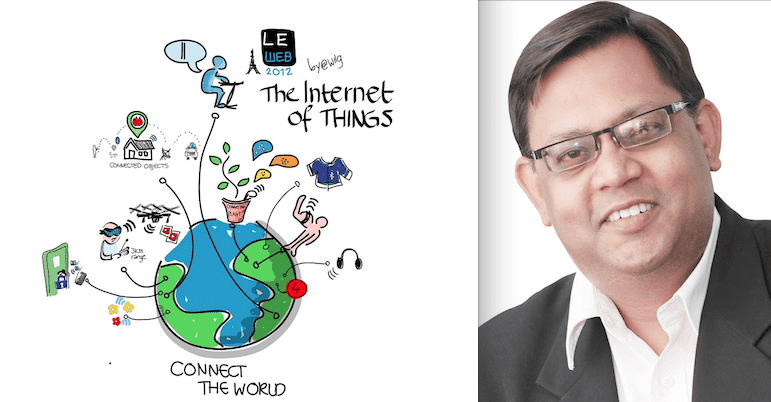Internet of Things (IoT) solutions are evolving day-by-day and opening up new gateways for progress and innovation. In a conversation with Paromik Chakraborty of Electronics For You, Shekhar Sanyal, director and country Head, IET India, talks about the business opportunities for startups in IoT space, impact of IoT on industries and endeavours of the IoT Congress

Q. What are the business opportunities for startups in the IoT?
A. Right now, the best business opportunities in the IoT lie at the intersection of industries where no solution has been thought of yet. And by that, we mean intersection of data produced by industries. There lies a big opening for a startup if it can find the intersection where the data of one industry can be used for another using IoT solutions.
Most startups work on intersections where solutions are already available. The value comes from aligning the different datasets available and intersecting them so that the combination can benefit the users in new ways.
Q. What are the areas for investments in industrial IoT?
A. In sectors like automobile manufacturing, especially with the advent of electric cars, use of automation will keep increasing for the next three to five years. In the SME sector, the difference between the cost of investing in automated process and the cost of laboured process will start to narrow. So more and more SMEs will start implementing automation.
Speaking of specific technology, AI will play a key role. Nanotechnology will also get linked to IoT and play a bigger role. New technologies will develop in the background, and that is where the investment should be made.
Q. How can Indian IoT startups hit the bull’s eye?
A. Most startups are digitally savvy. They understand how the software and the technologies work. But, they lag behind in finding the link to the traditional industry. How many startups are looking at the electronics, electrical, power and energy, or automobile manufacturing industries, and providing solutions for them? These are the key infrastructure industries that are vital for the progress of the industrial economy. Since these industries are large and capital-intensive, startups tend to stay away from them.
Q. Please explain…
A. Let’s consider the energy industry, where a primary area for deep-diving is the smart grid—it will essentially change the way power is distributed. Another example is e-transportation, where electric vehicles need to optimise their electricity consumption. The internal combustion engine, which has a lot of moving parts today, will become much more digital. This leads to many new things that can be done over and above what is already present on the ground. The third example is energy storage. The renewable energy sector needs highly efficient solutions for storing and managing energy.
Q. How reliable are IoT networks currently?
A. Security and privacy are separate concerns. A lot of work is being done to ensure security on the cloud, and the available security levels are quite adequate. The challenge comes around privacy. There is presently no legal regulation or system for privacy handling. The situation is the same at global scale, and we all need to work towards bringing in some laws for data privacy.
Q. How will standardisation impact the industry?
A. Currently, there are about 15 different standards in various parts of the IoT, especially surrounding the way the data stack comes in and the kind of systems used to transfer the data. Availability of so many different standards creates a silos within the platform, disrupting interoperability—the main idea of the IoT. Having a single standard opens up the silos and makes the platform stronger and more valid.
From developers’ point of view, if there is a single common standard, you can just add onto the platform irrespective of what you create. It assimilates together and the value goes up.
With standardisation, anything developed around the globe will work in your country as well and you will not have to worry about compatibility.
Q. What is the main agenda for this year’s IoT Congress?
A. The theme of this year’s IoT Congress is healthcare, manufacturing and what’s next in IoT, with special attention to Clean Ganga project. It will focus on startups in IoT and also provide a peek into the virtual reality future of the IoT.












